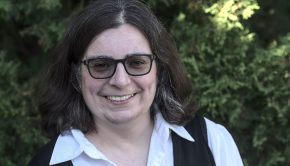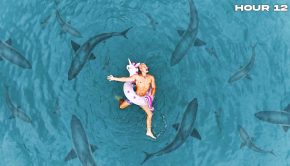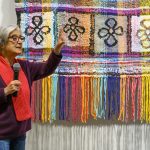Get Ready for Art Basel: Hubert Phipps Takes Flight, the Solo Show Opens Nov, 27 Through Dec. 28th
For the return of Art Basel Season to South Florida, TW Fine Art is pleased to present its next exhibition at its Palm Beach location, centered around the nationally acclaimed artist Hubert Phipps.
The new solo gallery exhibition is entitled Hubert Phipps Takes Flight and opens to the public with a reception on November 27th at 6:00 p.m. where guests are invited to meet the artist. The show runs through December 28th.
In addition, Phipps will be present for the New Wave Art Weekend for TW’s open house on December 4th.
Phipps, a sculptor & painter, is best known for his pigment works, paintings, and abstract sculptures, incorporating steel, bronze, wood, composites, plaster, and glass. An avid pilot since the age of 16, the artist is fast approaching his fiftieth anniversary as an aviator and was also a champion race car driver (National Champion in the SCCA 1981 Formula Atlantic). Phipps often pilots his Airbus Helicopter H-120 down to Palm Beach from his artist studio in Virginia and has logged 4,000+ hours of flying time. Hubert Phipps Takes Flight, curated by Ty Cooperman, emphasizes how the aerial perspective Phipps sees while flying above the earth is a significant influence on his work.
The gallery show features 17 works by Phipps, fourteen sculptures, and three paintings, some of which have never exhibited before. “Hubert Phipps offers a much-needed contemporary perspective on the endless quest to portray motion and energy in the visual arts. Like the Italian Futurists before him, Phipps encourages us all to reconsider the relationship between the organic and the industrial,” said Ty Cooperman.
Adventures in aviation are a longtime tradition for the storied Phipps family, who were Palm Beach pioneers ‒ one of his ancestors, Amy Phipps Guest, was one of the world’s first women aviation enthusiasts in the 1920s. She discovered Amelia Earhart and sponsored Earhart’s first successful transoceanic flight in 1928. This new show Hubert Phipps Takes Flight boldly demonstrates the fusion of Phipps’ explorations of humanity, culture, and creation ― how the body can serve as a means to use instruments and as a tool of artistic production itself.
“Hubert Phipps approaches his artistic practice like a seasoned horologist, in which beauty arises from the marriage of precision engineering and nature’s proclivity for entropy,” said Cooperman.
“Pinnacle” builds upon the relationship between space and motion. This gold polygonal structure becomes engulfed by pyramid-like forms and encourages us to make sense of the design. Despite its eternal stillness, it is nearly impossible to experience this work and not be struck by the sensation of having found a projectile seized by the power of earth and weight.
Phipps loved to draw from an early age, having learned from looking at his father’s archive of political cartoons, which he’d transcribe. To this day, he still begins most of his concepts in a sketchbook, starting with simple lines and fleshing out forms from there. However, when it comes to putting some of his broader ideas into existence, Phipps takes a less visual approach covering his eyes and eliminating light sources when he’s working with paint pigment. This work represents a progression over time, a moment that existed across dimensions of time and space––captured and made static for all eternity. And yet, an impression of motion remains. This extension of the body into his work continues throughout the exhibition.
In “Rocket,” Hubert explores the relationship between materials, design, and physical movement. These sculptures are maquettes representing the monumental sculpture that was recently selected for an art in public places initiative in Palm Beach County, by the Boca Raton Museum of Art (one of the largest outdoor public art sculptures in Palm Beach County).
The object itself may be static and seemingly frozen in space and time, yet it represents how we all can venture across planes. A hint at his aviation background, “Rocket” exists almost somewhere between a photograph and a video — it isn’t precisely a single moment – but rather a collection of moments made singular. Phipps’ penchant for design presents itself as a means of perfection in the surfaces of each work –– nothing unintentional or out of place.
We see a relation between the sculptural works as they exist in a simplified two-dimensional silhouette and three dimensions. Like a racecar or a plane, the profile is carefully considered equally in object movement and interaction with the ether.
ABOUT THE ARTIST
Hubert G. Phipps (born November 1, 1957) is an American sculptor and painter who divides his time between Middleburg, Virginia and New York City. Known for his paint pigment drawings and abstract sculptures, Phipps experiments with various forms and materials, including steel, bronze, wood, composites, plaster, glass, and marble. He was also a race car driver and is a member of the Phipps family.
Known for his abstract sculptures and paint pigment drawings, Phipps experiments with various forms and materials, including steel, bronze, wood, composites, plaster, glass, and marble.
His works are featured in the permanent collections of major museums, institutions, and private collectors, including: Tufts University Art Galleries (MA); Boca Raton Museum of Art (FL); Colorado Springs Fine Arts Center (CO); Harn Museum of Art (FL); Georgia Museum of Art (Athens, GA); Coral Springs Museum of Art (FL); and the Flint Institute of Arts (MI) which recently selected Paradise, the monumental bronze sculpture by Phipps, where the 1.5 ton, 9-foot-tall work is currently on view.
Phipps’ monumental sculpture “Rocket” was recently selected for an art in public places initiative in Palm Beach County. “Rocket” is valued at $1.5 million, stands 30-feet tall, weighs 9.8 tons, and took more than 2,200 square feet of stainless steel to construct. The sculpture towers alongside a waterfront panorama of iconic architecture designed by Marcel Breuer in the 1960s, at Boca Raton Innovation Campus, the historic tech landmark where the world’s first personal computer and the first smartphone were invented. His work has been exhibited at the Colorado Springs Fine Arts Center at Colorado College, the Ann Norton Sculpture Garden in West Palm Beach, the New York Studio School, the Center for Creative Education in West Palm Beach, the Fritz Gallery, MM Fine Arts Gallery in Southampton, New York, Coral Springs Museum of Art, Coral Springs, Florida, and Gallery 1608 in West Palm Beach.
Born in Virginia to Lady Phoebe Pleydell-Bouverie and Hubert Beaumont Phipps, Phipps started drawing at an early age. He developed skills as an illustrator, initially transcribing political cartoons. He attended Deerfield Academy. At Deerfield, Phipps discovered a passion for flying, something that he would continue throughout life. Since then, he has logged more than 4,000 hours as a pilot-in-command in both rotorcraft and fixed-wing. He is the cousin of sculptor Susan Phipps Cochran. He was part of the Art Students League of New York at the age of 17, and studied at the San Francisco Art Institute before pursuing a career as a professional race car driver.
Phipps and his TIGA FA 82
From 1979 to 1985, Phipps turned in solid performances in racecar driving, including winning the SCCA Formula Atlantic National championship, driving a Ralt RT4 powered by Ford. Despite incurring serious injuries during testing at the Sears Point Raceway in Sonoma, California in 1983, Phipps recovered and went on to achieve wins in the Formula Atlantic Professional series at Willow Springs, California in 1984, and again in 1985. His professional teammates included Danny Sullivan at Garvin Brown Racing in 1982 and Michael Andretti at Ralt America in 1983.
After retiring as a professional driver, Phipps turned his focus to art again. In 2001, he enrolled in IFAC in Miami to study computer animation, with additional training at Escape Studios in London. Phipps’ interest in animation was specifically to learn how to model forms in the computer as reference for sculpting objects, using traditional media. In 2002, Phipps participated in Graham Nixon’s drawing marathon at the New York Studio School of
Drawing, Painting, and Sculpture. It opened his ability to work in large-scale. Phipps was able to draw on his racing and aviation experiences, to develop a distinctive style.
Phipps has many approaches to drawing, including reference photos that he makes on long, cross-country flights and automatic drawing. He lets his subconscious guide the pen or brush until the work takes on a life of its own. A significant influence on Phipps’ work comes from the view he gets while flying. It is not unusual for him to fly cross-country trips, including coast to coast. He amasses photographic images on these trips that are used as reference for sculpture, paintings, and drawings.
Featured Image: Hubert Phipps, with his sculpture Serpent (photo by Frankie Damba)
Tweet







































